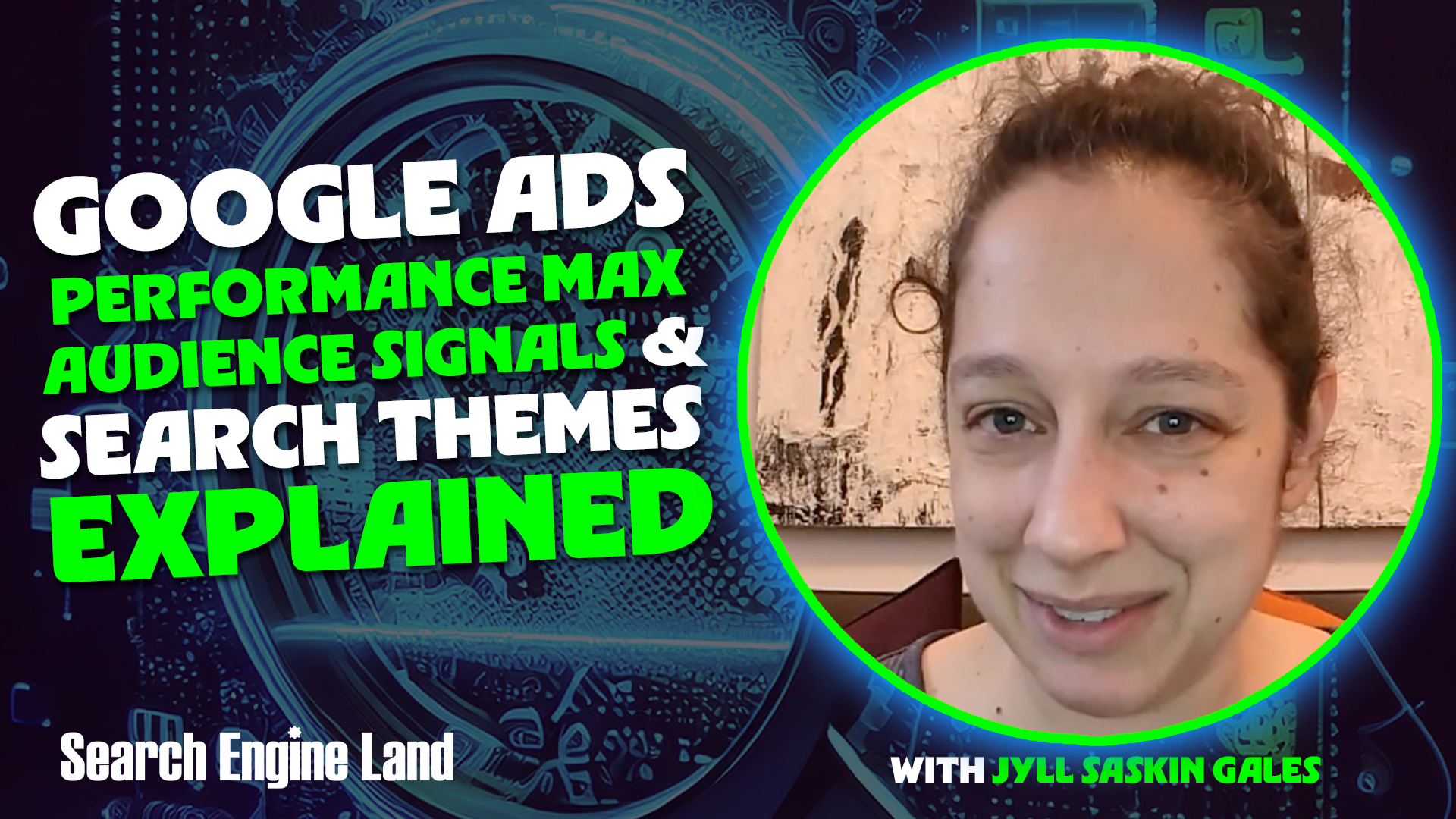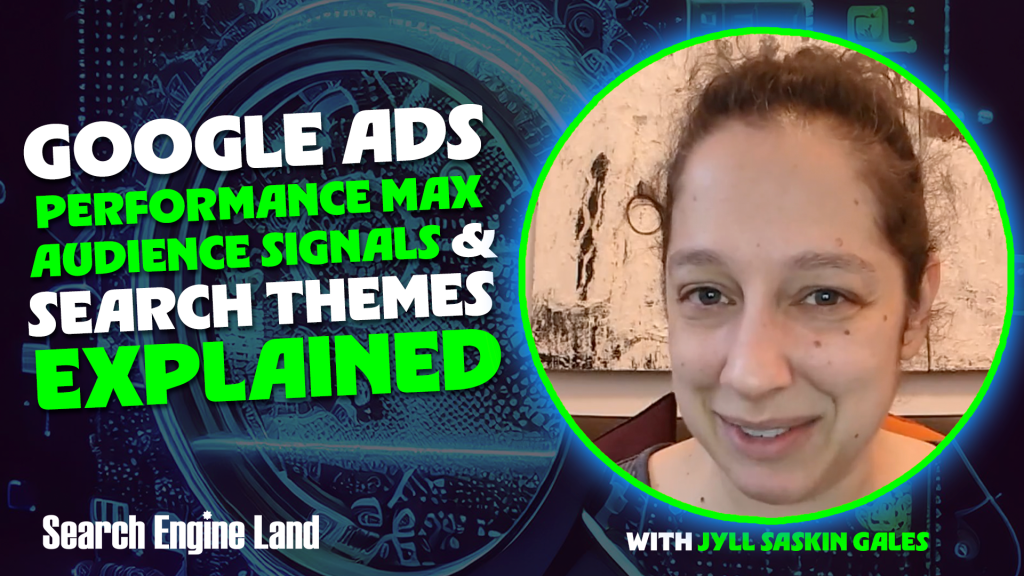Google Ads PMax: The truth about audience signals and search themes

If you’re running Performance Max, or planning to launch a new campaign, I want to clear up one of the most misunderstood parts of Google Ads: audience signals and search themes. Understanding how to use (and not misuse) signals can strongly impact your PMax success.
Why Performance Max is different than other Google Ads campaign types
If you stop reading here and take nothing else away from this article, remember this: You do not get to pick your audience or keyword targeting in PMax.
This is where a lot of advertisers get tripped up.
Unlike traditional Search campaigns where you build a keyword list, or Demand Gen where you choose specific demographics or interest-based audiences, or Display/Video where you can pick exact content placements – PMax is purely a goal-based campaign. Its primary directive is to achieve your conversion goal. That means your conversion tracking and your bid strategy are what actually determine who sees your ads.
“Under the hood” of Performance Max, optimized targeting and dynamic search technology decide who will see your ads, based on how likely Google thinks they are to help you achieve your goals.
You can provide the AI with a starting set of directions or “suggestions” via audience signals and search themes. If the AI likes your suggestions, it will follow them. And if it doesn’t, it will ignore them.
Audience signals vs. audience targeting
What really happens when you add audience signals to an asset group in your PMax campaign? You’re giving the AI a hint about who your ideal customer might be. Or to use Google’s words, you’re combining your expertise with Google’s AI.
Within the Google Ads interface, these audience signals look exactly like audience targeting. Your Performance Max audience signals can include:
- Your Data Segments: Customer lists (Customer Match), YouTube viewers, website visitors, etc.
- Google Segments: In-market, affinity, detailed demographic, or life events.
- Custom Segments: Based on interests, websites or apps.
The key thing to remember is that these are just signals. The AI takes your suggestions, but it’s not restricted to them.
For example, let’s say you give your PMax campaign the affinity segment “luxury shoppers” as an audience signal, because you sell high-end products. If the AI, over time, sees that the affinity segment “value shoppers” actually click through your ads and convert at a better rate, it
prioritize serving ads to those value shoppers rather than luxury shoppers. The AI will go where the conversions are, regardless of your initial signal. This is why conversion tracking is paramount.
Contrast that with a Demand Gen campaign. If you add the affinity segment “luxury shoppers” to Demand Gen, and optimized targeting is turned off, you will only show ads to users who match the luxury shoppers segment – even if it doesn’t convert well. If you use the Maximize Conversions bid strategy, Demand Gen will continue to spend your budget anyway. If you use Target CPA or Target ROAS, Demand Gen may stop spending if it can’t get conversions at an appropriate ROI out of your selected audience.
Search themes vs. keyword targeting
The same principle applies to search themes in Performance Max. If you’re familiar with keyword-based Google Search campaigns, you might assume search themes are just a new name for keywords – but they’re absolutely not the same thing.
In a Search campaign, a keyword sets rules around which queries can trigger your ads. Those rules may be broader than you want them to be, but that’s a topic for a different day! The point is, you can only serve ads on queries that match your keywords.
In PMax, a search theme is an optional suggestion you provide to the AI about the kinds of queries you think your ideal customer is using. If queries that match those search themes convert well and meet your goals, then you’ll continue to serve ads there. If they don’t, you won’t.
Why would you use search themes? Some use cases might be:
- To give your PMax campaign a “head start” on the types of queries you want
- If you’re launching a new product and Google’s AI hasn’t had enough time to crawl your assets and landing pages to figure out the right search queries yet
- If you want to let Google know you’re interested in showing up on competitor-related searches.
However, if you give the AI 50 search themes (the current maximum per asset group) that are not relevant to your website or that simply don’t lead to conversions, the PMax campaign is not going to spend its budget chasing those themes. It will prioritize the search queries that the data shows are most likely to convert, even if they aren’t included in your search themes. Again, this is why conversion tracking is paramount.
How to actually control your Performance Max campaign targeting
So, if signals aren’t the primary control for Performance Max targeting, what is? If you want to influence where your ads show up, you need to focus your efforts on the core elements of the campaign. Those are:
- Conversion Tracking: This is like the compass for your AI-powered self-driving car. It must be set up accurately and be measuring the actions that are truly valuable for your business.
- Bid Strategy: This tells PMax whether to focus on volume (Maximize Conversions, Maximize Conversion Value) or efficiency (Target CPA, Target ROAS). Because PMax only uses Smart Bidding, your conversion tracking is the key foundation required for your bid strategy to be effective.
- Assets (Creative): Your headlines, descriptions, images, and videos are all that the end user sees, so this determines whether or not they’ll engage with your ads, visit your landing page, and convert or not convert. The messages you convey via your assets “drive” your targeting much more than your optional signals.
Should you use audience signals and search themes?
By all means, use audience signals and search themes in your Performance Max campaigns. They can be helpful starting points, especially for new campaigns or when you have high-quality first-party data (like a Customer Match list).
Just remember that your PMax campaign could still serve ads to absolutely no one who matches any of the signals you provided, if the AI determines those people don’t convert as well as other segments. Don’t mistake signals for targeting!
One more PMax mistake to avoid
I often see this mistake when I audit Google Ads accounts: running a Performance Max campaign with multiple asset groups that have the exact same creative assets but use different audience signals/search themes.
I will repeat one more time: signals are not targeting!
By running the same assets multiple times over, all you’re doing is fragmenting the AI’s learning and wasting money on duplication.
The entire reason you create a different asset group is because you have different assets.
If you’d like to give those groups different signals, go for it. If you’d like to give them all the same signals, also go for it.
The distinction between asset groups should be the creative and/or product mix, not just the signals.
This article is part of our ongoing bi-weekly Search Engine Land series, Everything you need to know about Google Ads in less than 3 minutes. Every other Wednesday, Jyll highlights a different Google Ads feature, and what you need to know to get the best results from it – all in a quick 3-minute read.







Recent Comments